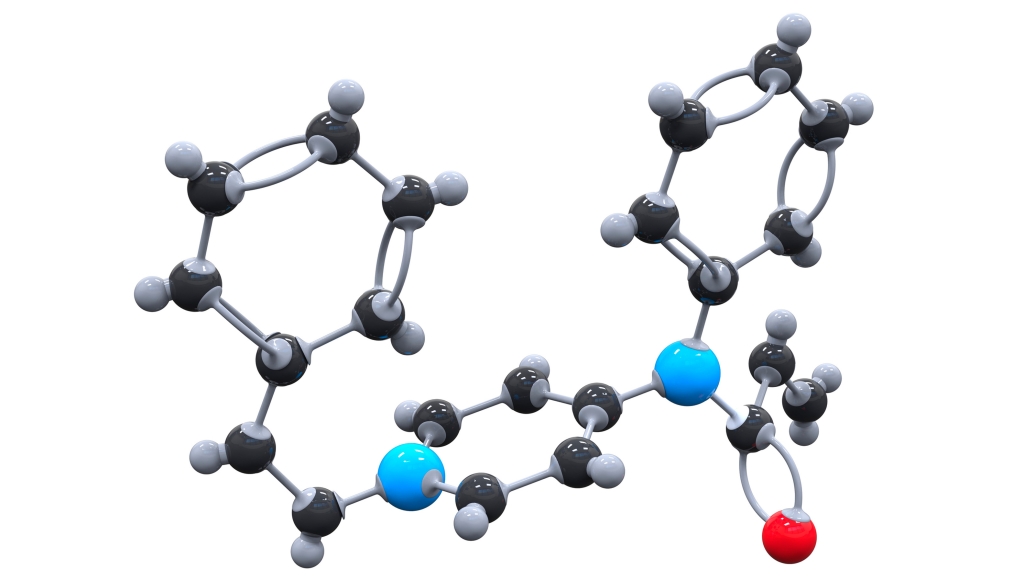Scientists have identified a molecule that appears to restore normal breathing in mice following a large dose of fentanyl
11:49 AM
Author |

Over the past few decades, the opioid epidemic has gripped the United States, fueled in large part by the over-prescription of pain relieving drugs like oxycodone.
As those pharmaceuticals were made more difficult to obtain, opioids such as heroin and fentanyl began new waves of the epidemic and more deaths from overdose.
Fentanyl and its cousins, known as fentalogs (fentanyl analogs) are particularly dangerous—just two milligrams can prove lethal.
All of these drugs act at the mu-opioid receptor, which is responsible for their pain relieving properties as well as their addictive and lethal properties.
University of Michigan basic science researchers hope that the solution to prevent people dying from overdose due to fentanyl can be found within its own chemistry.
When law enforcement discovers drugs at the scene of a crime, they send them for laboratory testing against something known as an analytical reference standard, explains Jess Anand, Ph.D., research assistant professor in the U-M Medical School Department of Pharmacology.
The results of chemical testing inform the kind of drug it is most closely related to and whether it’s illegal.
Currently, most non-medically used fentalogs are Schedule 1 drugs—drugs with no currently accepted medical use and a high potential for abuse.
The U-M team suspected that certain fentalogs could potentially be used as antidotes to fentanyl, much in the way that naloxone, which has a chemical structure very close to morphine, is an antagonist for morphine, heroin and oxycodone, but may be less able to reverse the effects of fentanyl and its analogs.
Naloxone works by strongly binding to the mu opioid receptor, blocking the opioid drug and reversing its physical effects.
However, naloxone alone is often insufficient to reverse an overdose due to fentanyl.
Using a library of reference standards, Anand, John Traynor, Ph.D., of the Department of Pharmacology, and their team tested 70 fentalogues at the mu-opioid receptor to identify those that might block fentanyl’s strong bond with the receptor.
In doing so, they identified one molecule that appears to work as well as naloxone to restore normal breathing in a mouse model following a large dose of fentanyl.
Their work is described in a recent issue of the journal ACS Chemical Neuroscience.
While the findings are promising, Anand notes that it’s extremely difficult to do basic research with Schedule 1 drugs.
The antidote to fentanyl may lie unexamined in a lab somewhere, stresses Anand.
“My message to researchers is to be curious,” she said.
“We need to really explore structural activity relationships because a small change in a molecule can make a huge difference in terms of what it actually does in the body.”
Additional authors: Sierra C. Moore, Emma E. Dixon, Carmelita M. Perrien Naccarato, Joshua L. West, Lennon J. Delong, Emily Burgess and Jack J. Twarozynski.
Funding/disclosures: This work was supported by National Institutes of Health grants R03 DA 048129, R21 DA051723, and UG3 DA056884.
Paper cited: “Structure–Activity Relationships of the Fentanyl Scaffold: Identification of Antagonists as Potential Opioid Overdose Reversal Agents,” ACS Chemical Neuroscience. DOI: 10.1021/acschemneuro.4c00203
Sign up for Health Lab newsletters today. Get medical tips from top experts and learn about new scientific discoveries every week.
Sign up for the Health Lab Podcast. Add us wherever you listen to your favorite shows.

Explore a variety of health care news & stories by visiting the Health Lab home page for more articles.

Department of Communication at Michigan Medicine

Research Assistant Professor

Professor
Want top health & research news weekly? Sign up for Health Lab’s newsletters today!




